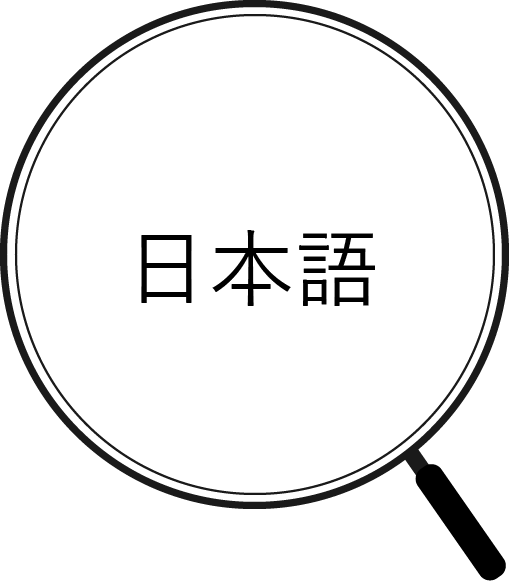


Nutritious Euglena
Today, euglena is expected to be used in a variety of fields, and actually, its potential as a business was first discovered in the food industry. Euglena is rich in nutrients and is now being sold as healthy foods. This page explains the world of euglena as a food.
Nutrients and High Absorption Rate of Euglena
Nutrients of Euglena
Euglena has the characteristic of having both animal and plant-like characteristics, and the 59 nutrients contained in euglena include both plant-like and animal-like substances. It also contains a nutrient called paramylon, which is unique to euglena, and is expected to have a variety of effects.

The vitamin C, vitamin K, and folic acid in euglena are plant-based nutrients. Vitamin C is essential for the production of collagen, which connects cells, and it is difficult to store in the body, therefore we need to take it frequently. Vitamin K plays a role in controlling blood clotting factors, and a lack of it can make it difficult to stop bleeding. Folic acid is also important for women,especially during pregnancy and lactation, as it helps in the production of red blood cells and cells.
Euglena also contains animal-based nutrients, such as vitamin B1, vitamin B12, docosahexaenoic acid (DHA), and eicosapentaenoic acid (EPA). We can take vitamin B1 from pork, etc. It is needed to convert carbohydrates into energy, and a deficiency can cause fatigue and tiredness. Vitamin B12 can be obtained from shellfish, liver, fish, etc. Together with folic acid, it helps in the production of hemoglobin in red blood cells. DHA and EPA are abundantly contained in oily blue fish such as sardine and mackerel, etc. DHA is said to play an important role in the functioning of the eyes, brain, and heart, while EPA is said to reduce blood pressure and blood viscosity. In other words, it is said that it has the effect of making the blood flow smoothly.
Also, euglena contains all 9 essential amino acids and minerals that humans and animals cannot produce in their bodies, making it possible to take in extremely well-balanced nutrition. The " Amino Acid Score," which indicates the balance of essential amino acids, is 83 for euglena, compared to the ideal value of 100, far higher than the 54 of chlorella and the 51 of spirulina, which are attracting attention as nutritional foods. Pork, beef, bonito, and eggs have an amino acid score of 100, and cheese and shellfish have a score higher than that of euglena.
Absorption Rate of Euglena
Living organisms’ cells have a cell membrane that separates the inside and outside of the cell, and plant cells have a cell wall on the outside. The cell wall stabilizes the shape of the cell and is made up of cellulose, glycinin and other components. Animal cells have a structure called a cytoskeleton inside the cell, however, the cell wall of plant cells is much sturdier, as wood structures can remain in place for thousands of years.

However, when viewed as food, cell walls are a barrier to absorbing nutrients. Many animals do not have cellulase, a digestive enzyme that decomposes cellulose, and herbivores such as cattle and horses grind plants with their molars to physically destroy as much of the cell wall as possible, and then digest them through repeated ruminations with microorganisms that can produce cellulase living in the stomach and other digestive organs.

Since humans do not have cellulase and do not have the mechanism to digest cellulose as cattle do, we have been eating plants with weak cell walls or destroying the cell walls by heating them. Even with these efforts, the plants we eat are not fully digested, and a considerable part of them is discharged.
On the other hand, meat and fish, which do not have cell walls, are easier to digest than plants, and their nutrient absorption rate is higher. Since euglena does not have cell walls, the digestion and absorption rate of nutrients is as high as 93.1%, allowing for efficient intake of nutrients.

Usefulness of a Complete Meal
According to the report compiled by five UN organizations, including the Food and Agriculture Organization of the United Nations (FAO) and the United Nations World Food Programme (WFP), the number of starving people in the world in 2019 is estimated to be about 690 million, an increase of 10 million from 2018 and nearly 60 million in five years. Of these, few have no access to food at all, and many are said to be starving because they are not getting the balanced nutrition they need. In fact, grains such as rice, wheat, and corn have been able to reach the world as relief supplies, however, it is still difficult to support people with food so that they can have a balanced intake of the nutrients they need to stay healthy.
It is hoped that if it becomes possible to cultivate large quantities of food like euglena, which provides both animal and plant nutrients and minerals, this situation might be overcome.
Mitsuru Izumo, CEO of Euglena, which is developing various businesses using euglena, also saw the reality of hunger in Bangladesh when he was a university student, which led him to think about food issues and influenced him to establish Euglena.
Possibility of Paramylon
Euglena has nutrients called paramylon that are not found in other organisms. Paramylon is a polysaccharide made up of long chains of glucose, and has a special molecular structure. Plants produce glucose through photosynthesis, but if it remains as glucose, it may react with other substances or become unsustainable due to osmotic pressure, therefore it is made into a larger molecule compared to starch and other glucose. This makes it less soluble in water and easier to store. There are two types of glucose, α and β, and in an aqueous solution, they are converted to each other to maintain equilibrium.

Depending on how α- and β-glucose combine with each other, substances with different properties are produced.

Amylose, the starch of normal rice, is an " α-1,4 glucan" since the α-glucose molecules are bonded to each other at carbons ① and ④ in the diagram below. The structure is a relatively loose helix, which makes it easy to break down.
In cellulose, β-glucose is connected at locations ① and ④, resulting in "β1,4 glucan", which has a very strong sheet-like structure.
The β-glucose produced by euglena is connected at locations ① and ③, and the "β1,3 glucan" is paramylon, which has a triple-helix structure.

This paramylon is similar in shape to the sugar chains of pathogens and is recognized as a pathogen by the body's immune cells. This has the effect of activating immune cells. In a mouse test, it succeeded in alleviating the symptoms of influenza, and in a study on atopic dermatitis patients, it was found to alleviate the symptoms.
Glucans are produced by a variety of organisms, but usually, multiple types of glucans are mixed together to produce them. However, euglena produces only β1,3 glucan, and no other glucan is produced. Although the cause and purpose of this phenomenon have not been clarified, it is important for industrial applications to have 100% purity, and it is attracting attention from this perspective.
Current Status of Euglena Foods
Today, several types of euglena foods are sold, and restaurants and convenience stores also sell products that use euglena as an ingredient. In order to take advantage of its rich nutrients, many of these foods are supplements. However, people are also looking for ways to enjoy the taste of euglena, such as kneading it into bread or cooking it in restaurants, rather than just taking in the nutrients.Euglena does not have a very strong taste, but it has a fish-like umami" flavor, which is thought to be caused by its high amino acid content. In this way, euglena food has become very familiar and can be purchased by anyone.
This site is participating in the 23nd Japan Junior high school/high school Web contest(第23回全国中学高校Webコンテスト).
